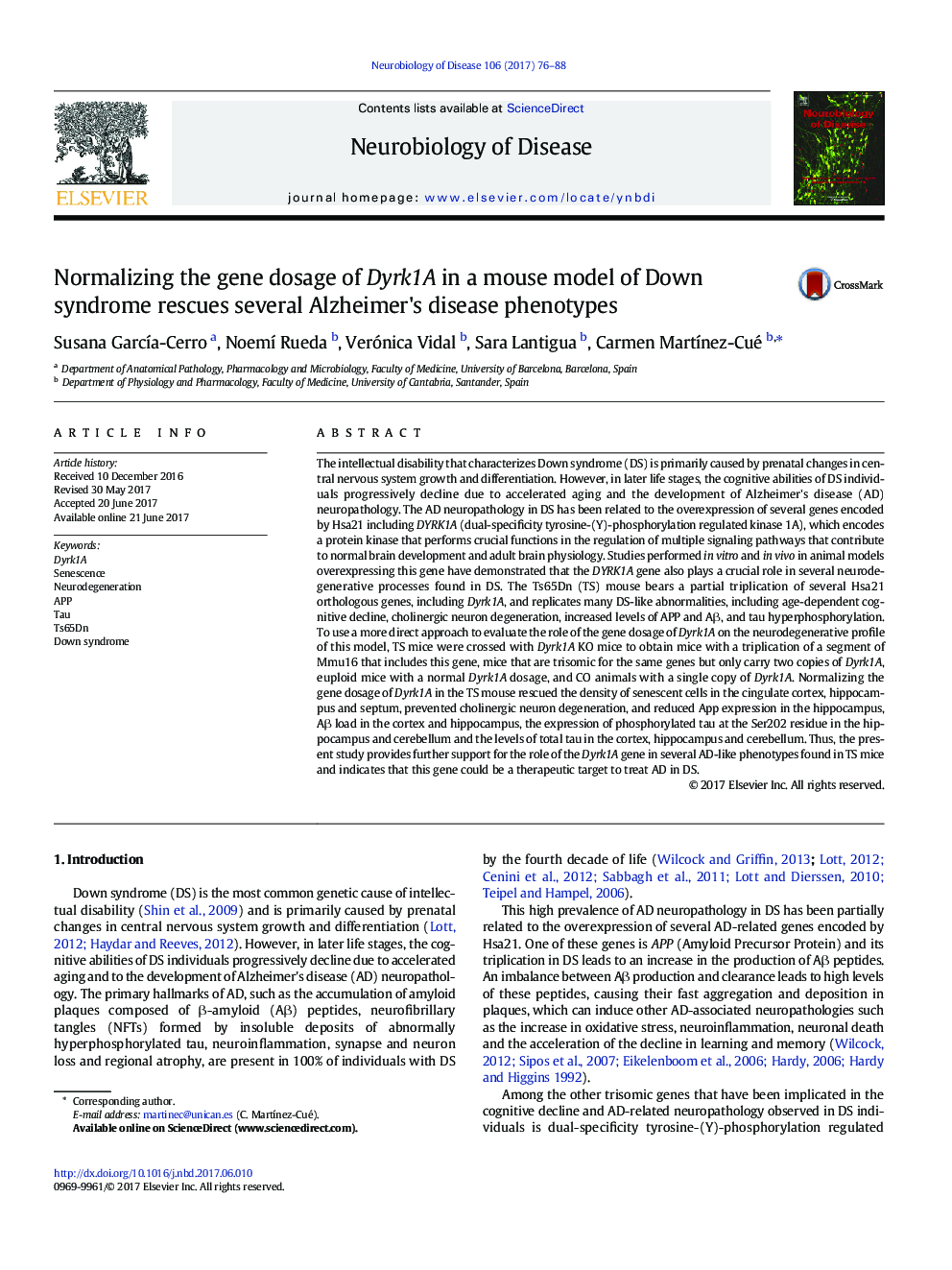| کد مقاله | کد نشریه | سال انتشار | مقاله انگلیسی | نسخه تمام متن |
|---|---|---|---|---|
| 5630586 | 1580615 | 2017 | 13 صفحه PDF | دانلود رایگان |

- Dyrk1A is implicated in several Alzheimer's Disease phenotypes found in Down syndrome.
- Reducing Dyrk1A gene dosage in Ts65Dn mice rescued cellular senescence.
- Reducing Dyrk1A gene dosage in Ts65Dn mice prevented cholinergic neurodegeneration.
- Normalizing Dyrk1A copy number in Ts65Dn mice reduced Aβ load and App and tau levels.
The intellectual disability that characterizes Down syndrome (DS) is primarily caused by prenatal changes in central nervous system growth and differentiation. However, in later life stages, the cognitive abilities of DS individuals progressively decline due to accelerated aging and the development of Alzheimer's disease (AD) neuropathology. The AD neuropathology in DS has been related to the overexpression of several genes encoded by Hsa21 including DYRK1A (dual-specificity tyrosine-(Y)-phosphorylation regulated kinase 1A), which encodes a protein kinase that performs crucial functions in the regulation of multiple signaling pathways that contribute to normal brain development and adult brain physiology. Studies performed in vitro and in vivo in animal models overexpressing this gene have demonstrated that the DYRK1A gene also plays a crucial role in several neurodegenerative processes found in DS. The Ts65Dn (TS) mouse bears a partial triplication of several Hsa21 orthologous genes, including Dyrk1A, and replicates many DS-like abnormalities, including age-dependent cognitive decline, cholinergic neuron degeneration, increased levels of APP and Aβ, and tau hyperphosphorylation. To use a more direct approach to evaluate the role of the gene dosage of Dyrk1A on the neurodegenerative profile of this model, TS mice were crossed with Dyrk1A KO mice to obtain mice with a triplication of a segment of Mmu16 that includes this gene, mice that are trisomic for the same genes but only carry two copies of Dyrk1A, euploid mice with a normal Dyrk1A dosage, and CO animals with a single copy of Dyrk1A. Normalizing the gene dosage of Dyrk1A in the TS mouse rescued the density of senescent cells in the cingulate cortex, hippocampus and septum, prevented cholinergic neuron degeneration, and reduced App expression in the hippocampus, Aβ load in the cortex and hippocampus, the expression of phosphorylated tau at the Ser202 residue in the hippocampus and cerebellum and the levels of total tau in the cortex, hippocampus and cerebellum. Thus, the present study provides further support for the role of the Dyrk1A gene in several AD-like phenotypes found in TS mice and indicates that this gene could be a therapeutic target to treat AD in DS.
Journal: Neurobiology of Disease - Volume 106, October 2017, Pages 76-88